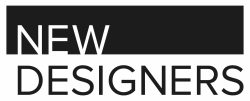PRODUCT DESIGNER, HANNAH COOMBS, ON COMMUNICATING WITH THE USER
This month’s theme explores Colour In Design, calling on emerging talent to question the importance of colour, provide insight into their design process and discover why it is paramount to that particular designer’s practice.
We also look to industry professionals to shine a light on this topic, collecting expert advice and guidance for the next wave of designers and those interested in how brands align or consider the significance of colour in design.
We recently caught up with Hannah Coombs to explore colour theories, inspirations and to discover what this 2020 alumni had been up to since ND.

Colour is an integral part of design. A design is not complete until you have considered the user experience, functionality, and form- and this includes colour. Colour is a way of communicating how the product will be perceived by users and others, and has the power to evoke feelings and moods.
Do you believe colour can be a communicator and if so, what are your colour theories?
Colour is a key communicator for me and I believe it has the power to make your design succeed or fail.
It can make the difference between people loving a design and actively wanting to use it, or feeling it is not for them. Get it very wrong, and they may even feel uncomfortable or embarrassed around a product.
My colour theory is that colour is a way to emotionally connect with your users. It is important therefore to think carefully about colour when designing your product to ensure it is saying the right things to your audience.
It’s also important to note that colours can have different meanings in different cultures, so it’s really important to thoroughly research and consider the connotations of colours before choosing them for your design.
Never underestimate the power of colour!
Is colour timeless or does it evolve? Can you give us an example of a trend or colour patterns you have experienced?
Colour is timeless, but combinations are where trends and fashion come in.
Things like texture and depth can change how a colour appears, so these need to be considered too. What I find really interesting is that trends tend to recycle again over the years; for example neons were popular when I was a teen, and have recently had a resurgence. Everything goes in and out of fashion, so that’s something you need to consider when designing.
Do you want to create something timeless that lasts a long time, or something that’s really on trend that might not have longevity?
Where do you find your colour inspiration?

I like to go on the ‘explore’ page on Instagram and just notice the colours, patterns and themes that come up. Then when I go on walks I take pictures of anything that catches my eye. Some people might wonder why I took a picture of a random wall or leaf or graffiti, but all of these can be a source of inspiration if you look for it.
Do you follow any colour design rules? Can you share any no-goes on colour matching or any winning colour harmonies you have created?
Colour for me is individual to each project and each user group or target audience I am designing for. I believe all colour combinations have a place, even garish and clashing combinations would be loved by certain groups.
I think it’s all about research and building a picture of and insight into your target group and what colours they associate with, which will help inform your design decisions. The worst thing you can do is assume everyone likes the same colours as you!
What have you been working on over this past year? What lies ahead for you, can you share a sneak peek of your upcoming projects?
I was shortlisted for the New Designers Colour in Design award for my final year project, ‘Get a Grip’; a set of products to make daily tasks easier for 50-70 year-olds with dexterity-related impairments. I positioned the product to disrupt the visual stereotypes of assistive products, which look clinical and are described as ‘brown, beige and boring’ (MIT Technology Review), which creates a barrier between the user and product. Instead, a fun and vibrant purple with sleek white gloss was used to make the devices feel stylish and ageless. I also used a pop of yellow to highlight key user interaction points. Purple was chosen as it is associated with disability empowerment, with the spending power of disabled people being referred to as the Purple Pound.
The knowledge I gained from this project has helped me think about the role of colour in my new job, and has opened my eyes to the world of inclusive design. I’ve been working on a wide variety of different projects with Makers Department, in sectors as diverse as beauty and automotive. I’m excited to see some of these products being launched as early as June!
As part of my business, Hello Recovery, I have also launched a well-being journal to help young people struggling with their mental health. The journal uses pastel colours to instill a sense of calm and create a soothing feel. This was my final year graphic project and I had such positive feedback that I decided to actually get it made and sell it on my website. It’s been a huge success and is now one of my best-selling products, so it’s been really exciting to see something go from a uni project to a commercial product.
If 2020 was a colour, what would it be for you and why?
Earthy brown.
At first glance, it might seem dead and barren, but soil is actually the foundation of life, where seeds grow and roots are laid. 2020 was a difficult year for everyone, but it was also a year of coming together and hope, a strong foundation on which to build for the future.




